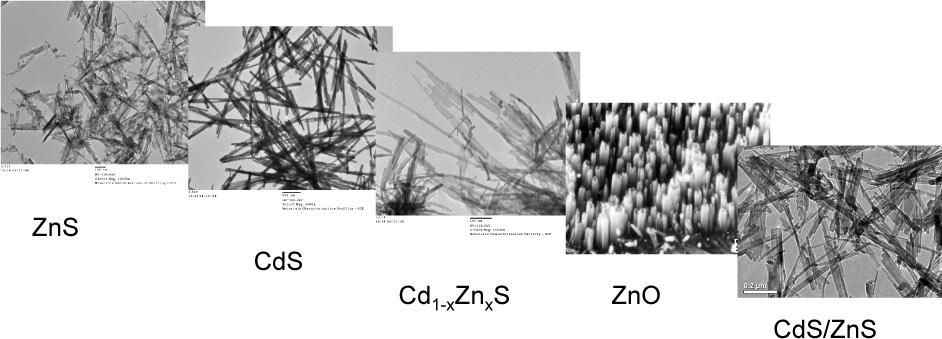An important aspect of organic/inorganic hybrid solar cell is the significant intermixing of donor/acceptor layers that maximizes exciton dissociation and charge creation. The inclusion of nanostructures in a multi-heterojunction configuration would facilitate the formation of vectoral electron and hole transport pathways, thus minimizing the charge recombination and trapping. Inorganic nanostructures have higher absorption coefficient and photoconductivity compared to many organic semiconductor materials. Higher efficiency is expected from one-dimensional (1-D) inorganic nanostructures because of the smaller number of hops necessary for charges to reach the electrodes. Our goal is to develop 1-D semiconducting architectures of electron acceptors for organic/inorganic hybrid solar cells. A few representative 1-D inorganic nanostructures are shown below that have been synthesized in our lab. We are currently synthesizing CdTe nanorods/nanowires for making solution processable CdTe/P3HT hybrid film.

For More Information
Dr. Swadeshmukul Santra
NanoScience Technology Center
University of Central Florida
Orlando, FL 32826